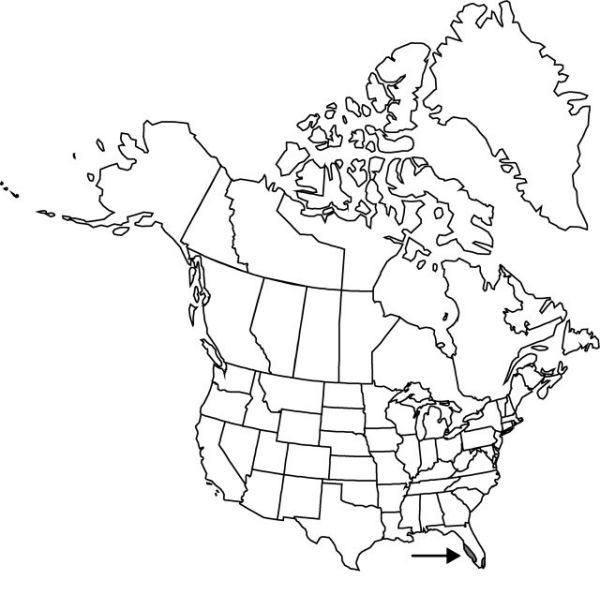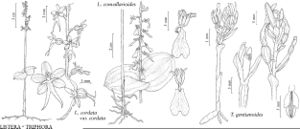Triphora gentianoides
in O. Ames, Orchidaceae 7: 5. 1922.
Plants 8–26 cm. Roots from cylindric tuberoids, 30–60 × 8–10 mm. Stems green, often tinged with brown or purplish, unbranched or rarely 2–3-branched from base. Leaves 3–10, ascending, usually partially sheathing stem; blade green, often tinged with brown or purple, bractlike, ovate, 1–1.8 × 0.5–1 cm, margins entire. Inflorescences 3–10 (–15) -flowered corymbose racemes. Flowers not resupinate, erect, closed to slightly gaping, pale green, sometimes tinged with brown or reddish-brown; flowering successive, anthesis overlapping; dorsal sepal linearlanceolate, 6–11 × 2–2.5 mm; lateral sepals linearlanceolate, falcate, 6–11 × 2–2.5 mm; petals linearlanceolate, falcate, 8–11 × 1–2 mm; lip facing stem, white to pale green, ovate to obovate, clawed, 3-lobed, 8–10 × 3–4 mm, middle lobe ovate, lateral lobes lanceovate, margins erose to nearly lacerate; disc with 3 green, raised, denticulate crests; column yellowish white, clavate, slender, 7 mm; pollinia 2, yellow. Capsules erect, ellipsoid, 10–20 × 5–10 mm.
Phenology: Flowering summer.
Habitat: Sandy pinelands in shade or full sun, persisting in sandy lawns, or rarely in shade of live- oak hammocks
Elevation: 0–10 m
Distribution

Fla., se Mexico, West Indies (Cuba), West Indies (Dominican Republic), West Indies (Haiti), Central America (Belize), Central America (Guatemala), Central America (Honduras), Central America (Panama), South America (Ecuador), South America (Venezuela)
Discussion
The flowers are presumed to be self-fertilizing. The anther color has been reported as purple for Venezuelan material (G. C. K. Dunsterville and L. A. Garay [1959]–1976, vol. 3).
Selected References
None.
